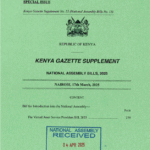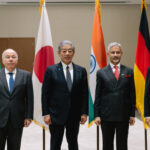Camila M. Romano, Researcher, USP Faculty of Medicine
Home to the greatest biodiversity on the planet , the Amazon is also a time bomb for the emergence or resurgence of diseases with pandemic potential. This is because environmental degradation and changes in landscapes are important factors in this process, which worsen in periods of extreme drought, such as the one currently affecting the region.
In the Amazon in particular, the paving of BR-319, connecting Porto Velho to Manaus, is a significant source of concern. The most conservative estimates predict that deforestation around the road could quadruple in the next 25 years , mainly due to land speculation. This is made worse by the fact that 90% of the directly affected area consists of areas of untouched forest.
And deforestation is not a static situation, but dynamic and unpredictable, resulting in the fragmentation of forests, increasing the risk of fires and reducing the biodiversity of affected areas. The association between human action in the Amazon, such as the paving of BR-319 and the illegal exploitation of areas for mining, climate change, disorderly migrations and precarious social development creates an environment conducive to the emergence and resurgence of diseases.
ALSO WATCH: Brazil seeks international investors, including China, to boost infrastructure
Known diseases…
This process can happen in different ways. The degradation of conserved areas, the diversion of rivers and extreme drought, for example, lead to water and food shortages. And this represents a direct threat of malnutrition , affecting the health of local populations, leaving them more vulnerable to known diseases.
The lack of clean water and poor hygiene in drought conditions also increase the risk of diseases transmitted by contaminated water and food, such as cholera and hepatitis, and viruses that cause severe diarrhea, such as rotavirus. Worsening the situation, the incidence of diseases associated with poor fish preservation, such as rhabdomyolysis (black urine disease) – which is not infectious – also increases during extreme droughts .
Global warming is also a critical factor in this process, allowing the expansion of the presence of mosquitoes that transmit diseases such as malaria and dengue. An increase of a few degrees in the planet’s average temperature can enable the colonization of areas previously inaccessible to these vectors, as they require relatively high temperature and humidity conditions. In regions where they are present, environmental degradation can increase or decrease rainy periods, favoring flooding and maintaining pooled water, and facilitating their proliferation.
It is no surprise that diseases transmitted by vectors are classic cases of outbreaks due to environmental imbalance . The recent humanitarian crisis among the Yanomami, a tragedy caused by illegal mining, land grabbing and lack of access to health services, is an example. In addition to the contamination of water and the environment by mercury, mining activity created a favorable environment for the reproduction and dissemination of species of mosquitoes of the genus Anopheles, the transmitter of the protozoan that causes malaria.
This occurs because the excavation of ravines to extract gold and minerals generates pools of water that act as artificial breeding sites. Furthermore, mining activity increases the human population in these remote regions, which facilitates the spread of malaria. In numerical terms, while between 2008-2012 around 20% of malaria cases occurred in Yanomami territory, between 2018-2022 almost 50% of cases affected this population.
ALSO READ: Brazil battles severe drought: water crisis grips the nation
And new diseases
But, without a doubt, infectious diseases, especially zoonotic ones (transmitted from animals to people), are the most worrying. While some pathogens (disease-causing agents, such as viruses and bacteria) are capable of infecting one or a few species of hosts, others are more generalist and can, if there is contact and opportunity, infect a wide range of animals.
This type of “jumping” from one host to another occurs constantly among animals in their natural habitat, for example, from bats to non-human primates, small rodents and other mammals. However, there is usually a balance in the circulation of these agents .
But when there is habitat destruction, whether for any reason (caused by Humanity or not), local species migrate to more conserved areas in search of food and shelter. And this can occur precisely in areas close to human settlements, favoring contact between wild animals and people .
Impossible to predict, but possible to monitor
Unfortunately, preventing zoonoses is not an easy task. Although we know that we are close to the limits of a one-way crisis, there is no effective method that can predict how, where, or what the next emerging disease will be.
But it is possible to monitor . To do this, we monitor the circulation of resistant viruses and bacteria in water, animal and vector, and also human samples. “Sentinel” animals such as bats, rodents and primates are subjected to new generation sequencing technologies for early detection of circulating agents that may pose a threat to human health.
And still, it’s not much. To be effective, surveillance must be constant and cover local and national spheres. Although Brazil has the capacity and basic technical infrastructure to do this, few actions are actually implemented. In addition to surveillance, we need investments in faster and more accurate diagnostic methods, which can make a difference and help contain, if not the emergency, the spread of a possible new disease with pandemic potential such as COVID-19.
Camila M. Romano, Researcher, USP Faculty of Medicine
*This article is republished from The Conversation under a Creative Commons license. Read the original article.













